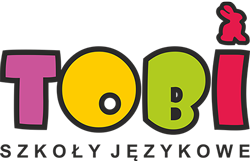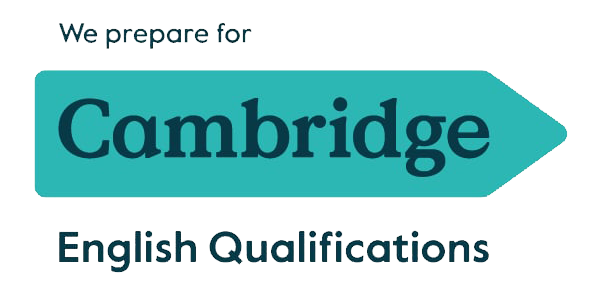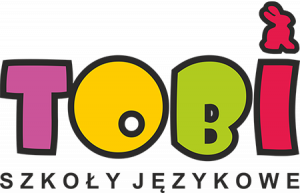- Transforming the boundaries of digital content, the buzz around onlyfans leaks captures attention and challenges norms.
- The Rise of OnlyFans: How It Began
- Understanding the Business Model
- The Community Aspect: Building Connections
- Legal Implications of OnlyFans Leaks
- Privacy and Ethical Considerations
- The Role of Social Media in Amplifying Leaks
- Creators’ Responses to Leaks
- Conclusion: Moving Forward
Transforming the boundaries of digital content, the buzz around onlyfans leaks captures attention and challenges norms.
The emergence of digital platforms has profoundly reshaped how content is created, shared, and consumed, particularly in niche markets such as personal subscription services. Among these platforms, OnlyFans has gained notoriety for allowing creators to monetize content directly through subscriptions. However, recent events surrounding „onlyfans leaks” have stirred considerable controversy, raising fundamental questions about privacy, consent, and the ethics of digital content sharing. These leaks not only put creators’ livelihoods at stake but also challenge widely accepted norms about privacy in the digital age.
OnlyFans started as a platform for artists and content creators, enabling them to share exclusive material for their fans. However, the nature of the platform often attracts content that is adult-oriented. This unique blend of subscriptions and adult material presents a compelling case for examining the current climate surrounding leaks. The conversations around onlyfans leaks reveal a critical intersection of technology, society, and personal rights that merits deeper investigation.
The public fascination with online leaks goes beyond voyeurism; it also highlights the pressing need for better privacy protection measures in the digital landscape. As we dive into the implications of these leaks, we must consider the societal structures that allow for such breaches to occur. This article aims to dissect the landscape of OnlyFans and the recent leaks while exploring the broader impact on digital content creation.
In the following sections, we will consider the repercussions for the platform, content creators, and consumers alike. The rapid spread of information through social media exacerbates risks for creators, leading to both legal and emotional ramifications. Ultimately, whether you are a content creator or a casual observer, the buzz surrounding onlyfans leaks has important implications that are challenging long-held social norms and expectations.
The Rise of OnlyFans: How It Began
OnlyFans was founded in 2016, offering a unique model where creators can earn money directly from their fans. Initially catering to various genres including fitness, music, and cooking, the platform quickly gained traction among adult content creators. This model allowed for more authentic and personal connections with subscribers, fostering a sense of community that few other platforms could replicate. The subscription-based system revolutionized content monetization, shifting power from traditional advertising to creators themselves.
The platform’s success can be attributed to its flexibility, as it allows content of all types but is often associated with adult entertainment. In recent years, the rise of adult platforms has become a significant cultural conversation, particularly regarding accountability and the ethical responsibilities that come with such freedom of expression. Following the surge in popularity, the inherent vulnerabilities associated with OnlyFans have become more evident, particularly concerning privacy issues.
| 2016 | OnlyFans founded |
| 2018 | Platform gains popularity among adult creators |
| 2020 | Massive surge in users during the pandemic |
| 2021 | Controversial content and leaks raise ethical questions |
Understanding the Business Model
At its core, OnlyFans operates on a subscription model that enables creators to set their monthly fees, allowing for direct monetization of content. This unique approach contrasts sharply with other content-sharing platforms that primarily rely on advertising for revenue. In addition, creators can earn money through tips and pay-per-view messages, providing multiple revenue streams and enabling a wider range of content. Users subscribe to specific creators, often providing a sense of loyalty and personal investment.
However, the business model, while lucrative for some, comes with its challenges. Creators often face legal and financial risks, including issues related to tax liability, copyright, and privacy breaches. In the case of onlyfans leaks, these risks are exacerbated, as stolen content can be distributed without permission, leading to significant emotional and financial impact for creators. As more individuals join the platform, the importance of understanding these dynamics becomes increasingly crucial.
The Community Aspect: Building Connections
One of the most appealing aspects of OnlyFans for both creators and subscribers is the notion of community. The platform facilitates intimate connections between creators and their audiences, fostering loyalty and engagement. This direct line of communication allows for personalized interactions, which can range from tailored content requests to direct communication via messages.
Many creators take pride in their unique communities, celebrating their subscribers through shout-outs, exclusive content, and an overall sense of belonging. However, the rise of leaks can disrupt these relationships, leading to mistrust among subscribers and creators alike. As conversations around loyalty, transparency, and compensation grow, the impact of onlyfans leaks becomes a pivotal consideration in maintaining these connections.
Legal Implications of OnlyFans Leaks
The legal implications surrounding onlyfans leaks are complex and multifaceted. Leaked content can result in potential lawsuits, not only for those who share the material but also for the platform itself. Content creators are often left vulnerable, facing challenges in addressing the unauthorized distribution of their work. Despite existing copyright laws, enforcing these rights in the digital landscape remains a significant hurdle.
Victims of leaks often experience financial repercussions, including lost subscribers and diminished income. In severe cases, individuals may experience emotional distress, leading to mental health challenges. Additionally, many creators may pursue legal avenues to protect their work, yet navigating the legal landscape can be overwhelming and often result in significant costs. The difficulties surrounding these legalities further emphasize the need for better protection mechanisms for digital content.
- Increase in unauthorized sharing of content.
- Challenges in prosecuting offenders due to jurisdictional issues.
- Limited awareness of copyright protections among creators.
Privacy and Ethical Considerations
Privacy is a major concern for creators on platforms like OnlyFans. With increasing cases of leaks, questions arise about what measures should be in place to protect content. The responsibility falls not only on individuals to safeguard their work but also on the platform to create sustainable solutions. Ethical considerations surrounding the sharing of intimate content must be evaluated, as the repercussions of leaks often ripple beyond creators, affecting families, communities, and overall trust in digital interactions.
The ethical implications extend to consumers as well. As audiences consume leaked material, they unknowingly contribute to the cycle of exploitation. The moral dilemma presents itself: how do consumers navigate their own participation in the distribution of leaked content? In this regard, everyone involved shares a stake in developing respectful consumption practices that honor the rights of creators while recognizing the societal shift towards digital content.
The Role of Social Media in Amplifying Leaks
Social media plays a crucial role in the phenomena of onlyfans leaks. Content can quickly go viral across platforms such as Twitter, Reddit, and Telegram, facilitating widespread access to unauthorized material. This rapid dissemination raises questions about digital responsibility, as social media networks often serve as unregulated spaces where users have limited recourse for addressing wrongdoing.
The power of social media to amplify and legitimized leaks underscores its role as both a tool for creators and a platform for harm. Creators can use these platforms to promote their work, potentially driving revenue through increased subscriptions. However, the same platforms can swiftly undermine their livelihoods when private content is leaked. The duality of social media highlights an urgent need for dialogue on content sharing boundaries.
Creators’ Responses to Leaks
In the face of ongoing leaks, many creators have adopted proactive measures to protect their content. These strategies range from enhanced security for their accounts to implement and increased watermarking techniques. By employing measures to authenticate their work, creators signal to subscribers the value and importance of respecting their content. Increased education on security strategies is also necessary, empowering creators to safeguard their material effectively.
Furthermore, some creators have chosen to speak openly about their experiences with leaks to foster community and awareness. Sharing stories not only serves as a therapeutic outlet but also provides valuable insights on protecting oneself in a precarious digital landscape. The resilience of creators in navigating such challenges has sparked important discussions on accountability and responsibility for both individuals and platforms.
Conclusion: Moving Forward
In conclusion, the landscape surrounding onlyfans leaks necessitates crucial conversations about digital rights, privacy, and ethical consumer behavior. As the platform continues to evolve, stakeholders must collaborate to create sustainable solutions that protect creators while allowing consumers to engage responsibly with the material. Only through concerted efforts can we reshape the boundaries of digital content in an ever-changing environment.


